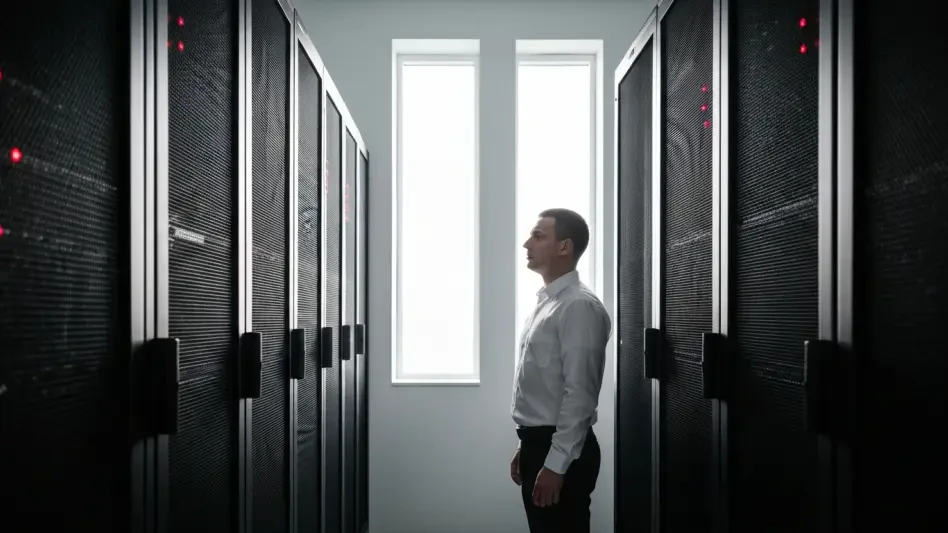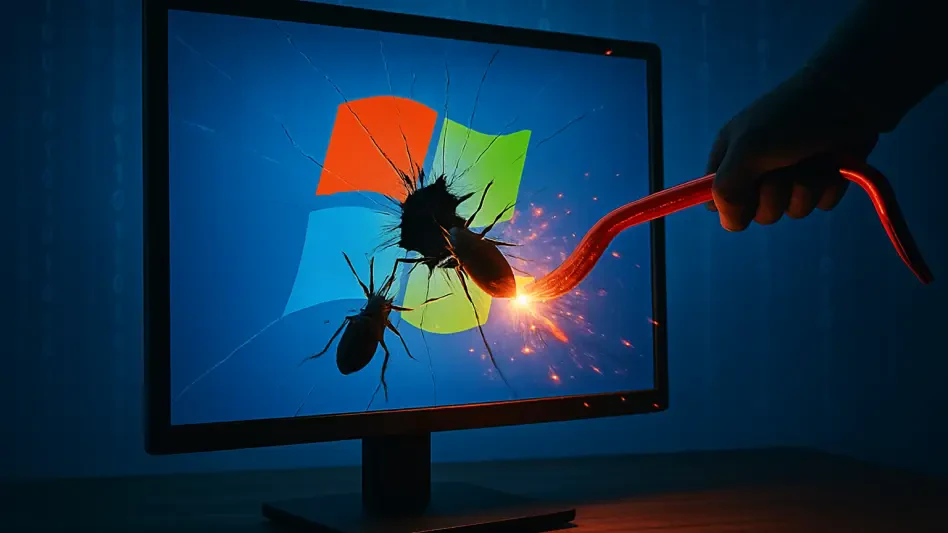In an era where a single click can unravel layers of digital security, a critical flaw in Google Chrome has emerged as a pressing concern for millions of users worldwide, prompting an urgent response from Google with an emergency patch rolled out to address the issue. Security teams across the globe have shifted into high gear, racing against time to protect systems from potential breaches. The flaw, known by its technical identifier CVE-2025-10585, targets a core component of Chrome, making it a significant threat to both individual users and organizations. As attackers actively exploit this bug in the wild, the importance of immediate action cannot be overstated. This article delves into the nature of the vulnerability, the risks it poses, and the steps necessary to safeguard systems against this alarming security gap.
1. Understanding the Urgent Threat
The digital landscape is rife with hidden dangers, and the latest Chrome zero-day vulnerability, CVE-2025-10585, underscores just how quickly a routine action can turn into a security nightmare. Google has confirmed the existence of an active exploit targeting the Stable channel of Chrome, affecting countless users who rely on the browser for daily tasks. This flaw originates in the V8 JavaScript engine, a critical piece of technology that powers web interactions. The issue, classified as a type confusion error, allows attackers to manipulate memory in ways that can lead to unauthorized code execution. As news of this exploit spreads, urgent advisories have been issued, emphasizing the need for swift updates to mitigate the risk of compromise.
Beyond the technical jargon, the real-world implications of this vulnerability are staggering. A simple visit to a compromised website or a click on a malicious link could provide attackers with a gateway to infiltrate systems. This situation elevates the importance of understanding the threat and responding promptly. For businesses, the stakes are even higher, as customer-facing systems and public web content become prime targets for exploitation. Google’s rapid release of a patch highlights the severity of the issue, but the responsibility lies with users and administrators to ensure their systems are updated before attackers can capitalize on this window of opportunity.
2. Immediate Steps to Secure Your Browser
Protecting systems from the CVE-2025-10585 exploit begins with a straightforward yet critical action: updating Chrome to the latest version. For individual users, this process involves launching the browser, navigating to the “About Google Chrome” section under settings, allowing the system to check for updates, and restarting the browser to apply the patch. This simple sequence ensures that the most recent security fixes are installed, closing the door on potential threats. The patched versions are currently rolling out for desktop platforms, and users must verify that their browser aligns with the latest release notes before considering their system secure.
For administrators managing multiple devices or networks, a more strategic approach is necessary. Priority should be given to machines that interact with customers or handle public web content, as these are often the first points of attack. Utilizing deployment tools such as Group Policy, MSI packages, or endpoint management solutions can streamline the process of pushing updates across Windows, macOS, and Linux systems. Ensuring that every device is updated promptly reduces the risk of exploitation significantly. While the rollout of patched builds continues over the coming days, staying vigilant and proactive remains essential for maintaining security across all endpoints.
3. Breaking Down the Vulnerability in Simple Terms
At the heart of the CVE-2025-10585 vulnerability lies a type confusion flaw within the V8 engine, the component responsible for running JavaScript and WebAssembly in Chrome. This kind of error occurs when the software misinterprets a piece of memory as one type of data when it is actually another, creating a mismatch that can lead to memory corruption. Skilled attackers can exploit this flaw by crafting specific inputs that trigger the error, potentially allowing them to execute malicious code. In essence, this vulnerability transforms an innocuous web interaction into a potential security breach, putting unpatched systems at significant risk.
To conceptualize this issue, imagine a program expecting a sealed container but receiving a leaky one instead. The software operates under false assumptions, and attackers can exploit this discrepancy to bypass intended safeguards. What might seem like a minor glitch becomes a critical entry point for remote compromise, especially when a user visits a malicious website. Understanding this vulnerability highlights the urgency of applying updates and reinforces the importance of robust security practices. As this flaw is already being exploited in the wild, the window for protection is narrow, making immediate action a top priority for all Chrome users.
4. The Critical Role of the V8 Engine
The V8 engine is far more than a background component of Chrome; it serves as the powerhouse that translates web code into machine instructions, enabling the seamless performance of modern web applications. Its sophisticated design incorporates complex optimization techniques to enhance speed and efficiency, but this complexity also introduces potential vulnerabilities. A single flaw in V8, such as the type confusion error identified in CVE-2025-10585, can provide attackers with substantial opportunities to manipulate the system, turning a minor bug into a major security threat with far-reaching consequences.
Moreover, the impact of a V8 vulnerability extends beyond Chrome itself. Many other browsers, including Edge, Brave, Opera, and Vivaldi, are built on the Chromium framework and rely on the same V8 engine. This shared codebase means that a flaw in V8 can ripple across multiple platforms, amplifying the risk for a vast user base. When Google releases a patch for Chrome, other vendors must adapt and deploy updates for their respective browsers. Delays in this process can leave users exposed, emphasizing the interconnected nature of browser security and the need for coordinated, timely responses across the ecosystem.
5. Timeline of Discovery and Response
The identification of CVE-2025-10585 marks a critical moment in the ongoing battle against cyber threats, with Google’s Threat Analysis Group first reporting the issue on September 16 of this year. Recognizing the severity of the flaw, the Chrome team acted swiftly to release an update for the Stable channel, aiming to protect users from active exploitation. This rapid response reflects a well-coordinated effort to minimize the exposure window, ensuring that as many systems as possible are safeguarded before attackers can fully capitalize on the vulnerability.
Such quick action is a cornerstone of effective cybersecurity, demonstrating the importance of streamlined communication between threat analysis teams and developers. By prioritizing the release of a patch, Google has provided users with the tools needed to defend against this zero-day exploit. However, the effectiveness of this response depends on user adoption of the update. Historical data shows that delays in applying patches often lead to increased risk, as attackers exploit the gap between discovery and remediation. This timeline underscores the urgency for both individuals and organizations to act without hesitation in updating their systems.
6. Why Initial Details Are Limited
When a vulnerability like CVE-2025-10585 is disclosed, vendors such as Google often adopt a cautious approach by limiting the technical details shared in initial announcements. This strategy is designed to prevent opportunistic attackers from gaining insights that could be used to craft exploits before patches are widely adopted. Early bulletins focus on actionable guidance, instructing users on how to update their browsers rather than delving into the specifics of the flaw, which could inadvertently aid malicious actors in their efforts.
This restrained disclosure is a deliberate balance between transparency and security. While users and administrators may seek comprehensive information to understand the threat, providing too much detail at the outset can exacerbate the risk. As updates are rolled out and systems are secured, more technical insights are often shared to aid in long-term mitigation and learning. For now, the priority remains on ensuring that the patch is applied across affected systems. This approach highlights the delicate balance of managing public knowledge and operational security in the face of active threats.
7. Active Exploitation and Heightened Urgency
Google’s confirmation that an exploit for CVE-2025-10585 is actively being used in the wild transforms this vulnerability from a theoretical concern into an immediate crisis. When a vendor acknowledges active exploitation, it typically indicates that telemetry or incident reports have detected real-world attempts to leverage the flaw. This development necessitates a shift in response, moving beyond standard patch cycles to prioritize emergency updates and protective measures across all affected systems.
The presence of an active exploit significantly raises the stakes for users and organizations alike. Unlike potential risks that may never materialize, this situation demands rapid action to close the window of opportunity for attackers. Security teams must treat this as an operational emergency, ensuring that updates are deployed without delay. Additionally, heightened awareness of potential attack vectors, such as malicious links or compromised websites, becomes critical. The urgency of this threat cannot be overstated, as every unpatched system remains a potential target for exploitation.
8. Identifying High-Risk Users and Systems
While any unpatched Chrome installation is vulnerable to CVE-2025-10585, certain groups face a higher risk due to their online behaviors or operational setups. Individuals who frequently access unverified or external web content are particularly susceptible, as attackers often target these users with malicious links or compromised sites. A single click on a deceptive email or advertisement can initiate an exploit, making user awareness and caution essential components of defense in this scenario.
Organizations, especially those with customer-facing web services, public kiosks, or third-party plugins, encounter even greater exposure. These environments provide attackers with accessible entry points, often amplified by social engineering tactics designed to exploit human error. Security teams must prioritize these high-risk systems for immediate updates while implementing additional safeguards, such as restricting access to untrusted content. Understanding which users and systems are most vulnerable allows for a targeted response, reducing the likelihood of a successful breach amidst the ongoing threat landscape.
9. Patch Details and Affected Versions
Google has addressed the CVE-2025-10585 vulnerability by updating the Stable channel to versions 140.0.7339.185 and 140.0.7339.186 for desktop platforms, with the rollout scheduled to complete over the coming days. This high-severity type confusion flaw in the V8 engine has been flagged as a critical issue, prompting collaboration with security teams and national CERTs to disseminate regional advisories. These updates provide the necessary fixes to prevent exploitation, and ensuring alignment with these versions is vital for security.
Administrators and users must verify their browser versions to confirm the patch has been applied, as older builds remain at risk. The coordinated effort to distribute this information underscores the severity of the threat and the importance of a unified response. Security bulletins have outlined the affected versions, enabling IT teams to identify vulnerable endpoints quickly. Staying informed about these updates and acting promptly ensures that systems are protected against the active exploitation of this flaw, minimizing potential damage.
10. Lessons Learned from Past Incidents
Reflecting on previous Chrome zero-day exploits, a recurring pattern emerges: attackers consistently target memory safety issues within engine code, as seen in multiple incidents this year. Each event reinforces the critical nature of browser updates, which are not merely performance enhancements but essential security measures. The rapid exploitation of vulnerabilities like CVE-2025-10585 demonstrates that staying current with patches is a fundamental defense against evolving threats.
Effective communication from vendors plays a pivotal role in mitigating these risks. Clear, concise patch notes and straightforward update instructions facilitate quicker adoption among users and administrators. Past incidents have shown that delays in applying updates often correlate with increased breach rates, highlighting the need for proactive management of browser security. These lessons emphasize the importance of vigilance and readiness, ensuring that systems are not left exposed to known flaws for longer than necessary.
11. Actionable Strategies for Staying Protected
Security teams and IT managers face a daunting task in responding to CVE-2025-10585, but a structured approach makes the challenge manageable. Cataloging all endpoints and identifying browser versions allows for the prioritization of internet-connected systems for urgent patching. Ensuring that automatic updates function as intended, or manually deploying patches through existing pipelines, proves critical in closing security gaps swiftly. These steps help minimize exposure during a critical window.
Beyond updates, refining detection rules and integrating relevant crash signatures into monitoring systems enhances the ability to identify potential exploits. Testing containment strategies ensures readiness for rapid response if a breach occurs. For those utilizing managed services for patch deployment, confirming update schedules and verification processes with providers is essential. These proactive measures, taken in the wake of the threat, fortify defenses and provide a blueprint for handling similar vulnerabilities in the future, ensuring systems remain secure against evolving risks.








